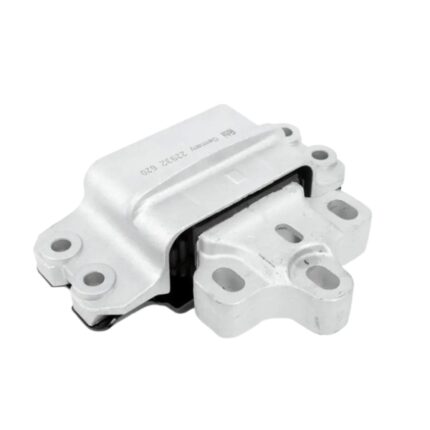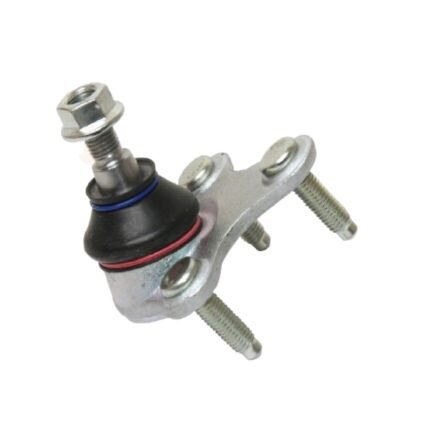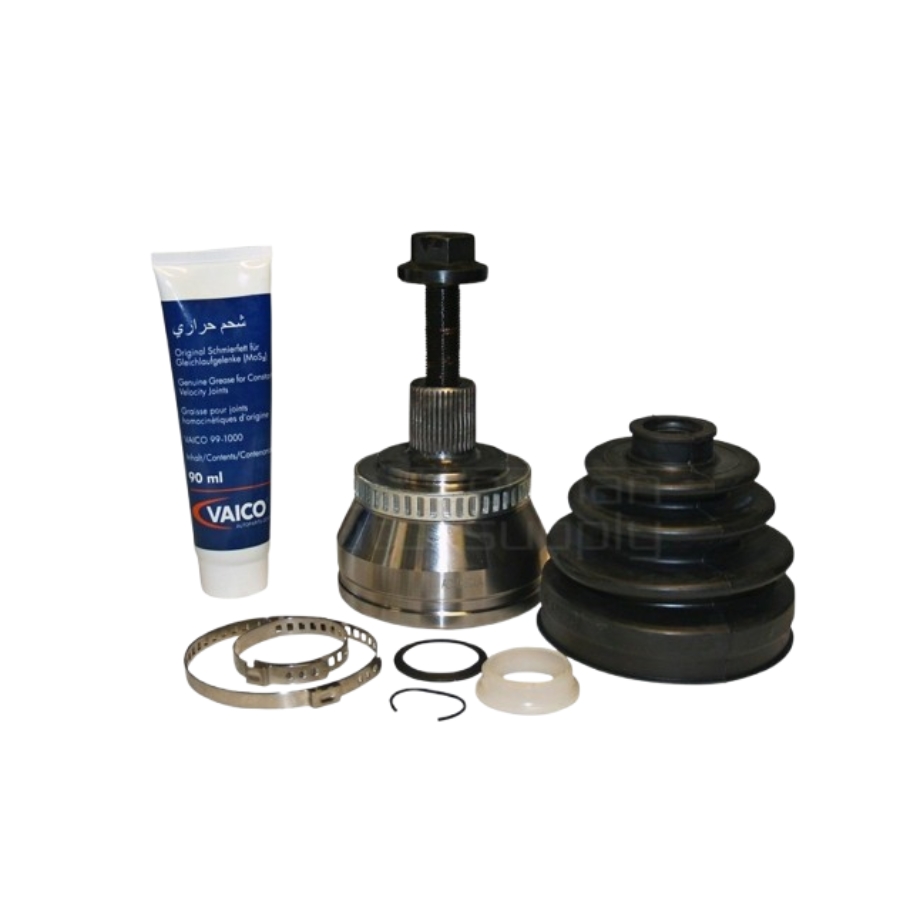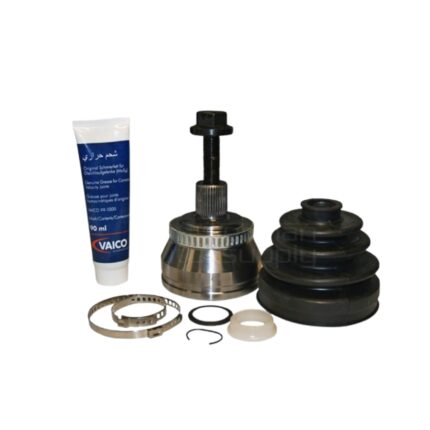Get AUDI A4 Quattro Front Outer CV Joint & Boot Kit 4D0498099A in Kenya
The CV (Constant Velocity) joint and boot kit is a critical component in a vehicle’s drivetrain system, particularly for vehicles with front-wheel drive or all-wheel drive configurations. The CV joint allows for smooth power transfer from the transmission to the wheels while accommodating the movement of the suspension system. The boot, which encloses the CV joint, protects it from dirt, debris, and moisture. Understanding the function, design, benefits, common issues, and maintenance of the CV joint and boot kit is essential for maintaining the vehicle’s performance and longevity.
CV Joint: Function and Importance
- Power Transfer: The CV joint is responsible for transferring power from the transmission to the wheels while allowing for the up-and-down movement of the suspension. This is essential for maintaining constant power delivery to the wheels during turns and while driving over uneven surfaces.
- Flexibility and Movement: Unlike traditional universal joints, CV joints provide a smooth transfer of power at varying angles. This flexibility allows the wheels to turn and move without causing excessive friction or power loss, ensuring a smooth driving experience.
- Noise Reduction: A properly functioning CV joint minimizes noise and vibration transmitted to the vehicle’s cabin. It helps ensure that the ride remains smooth and quiet, even when driving over rough terrain or making sharp turns.
Types of CV Joints
- Ball-Type CV Joint: Commonly used in front-wheel drive vehicles, the ball-type CV joint (also known as a Rzeppa joint) consists of a set of balls encased in a cage that allows for smooth power transfer while accommodating angular movement.
- Tripod-Type CV Joint: Often found in rear-wheel drive and all-wheel drive vehicles, the tripod-type CV joint uses a set of three or more tripod-like arms to transmit power while allowing for movement in different directions.
CV Boot: Function and Importance
- Protection: The CV boot encloses the CV joint, protecting it from contaminants such as dirt, water, and road salt. This protection is crucial for preventing premature wear and damage to the CV joint.
- Retention of Grease: The CV boot also retains the lubricating grease necessary for the proper operation of the CV joint. Without the boot, the grease could escape, leading to increased friction and potential joint failure.
- Prevention of Contamination: By sealing the CV joint, the boot prevents contaminants from entering the joint and causing damage. This helps extend the life of the CV joint and maintain its performance.
Design and Construction
- CV Joint Construction:
- Materials: CV joints are typically made from high-strength steel or other durable materials to withstand the stresses of power transfer and movement.
- Design: The design of the CV joint includes various internal components such as bearings, cages, and races, which work together to provide smooth and efficient power transfer.
- CV Boot Construction:
- Materials: CV boots are usually made from rubber, polyurethane, or other flexible materials that can withstand high temperatures, road debris, and chemical exposure.
- Design: The boot is designed to be flexible and stretchy, allowing it to accommodate the movement of the CV joint while maintaining a tight seal. It typically includes clamps or bands to secure it in place.
Common Issues
- CV Joint Failure:
- Noise: Worn or damaged CV joints can produce clicking or popping noises, especially when turning or accelerating. This noise is often a sign that the joint is failing and may require replacement.
- Vibration: A failing CV joint can cause vibrations that are felt through the steering wheel or the floor of the vehicle. This can indicate that the joint is worn out or damaged.
- Grease Leakage: If the CV boot is damaged or torn, it can lead to grease leakage from the joint. This can cause the joint to run dry and fail prematurely.
- CV Boot Damage:
- Tears and Cracks: Exposure to extreme temperatures, road debris, or physical damage can cause the CV boot to tear or crack. This damage can allow contaminants to enter the joint and lead to failure.
- Drying Out: Over time, the material of the CV boot can dry out and become brittle, leading to cracking or splitting.
Maintenance and Inspection
- Regular Inspections: Periodic inspections of the CV joint and boot are essential for identifying potential issues early. Check for visible signs of damage to the boot, such as tears, cracks, or grease leakage.
- Listen for Noises: Pay attention to any unusual noises coming from the drivetrain, especially when turning or accelerating. Clicking or popping sounds can indicate a problem with the CV joint.
- Check for Vibrations: Noticeable vibrations through the steering wheel or floor can be a sign of a failing CV joint. Addressing these symptoms early can help prevent further damage.
- Inspect Grease Leakage: If you notice grease around the wheel area or under the vehicle, it may indicate a damaged CV boot. Inspect the boot and joint for any signs of leakage.
Replacement and Repair
- CV Joint Replacement:
- Full Replacement: If the CV joint is worn or damaged, it typically needs to be replaced. A mechanic can remove the old joint and install a new one, ensuring proper alignment and function.
- Rebuild Kits: In some cases, a CV joint rebuild kit may be available, which allows for the replacement of internal components rather than the entire joint.
- CV Boot Replacement:
- Boot Replacement: If the CV boot is damaged, it should be replaced to prevent further damage to the CV joint. This involves removing the old boot, cleaning the joint, and installing a new boot with fresh grease.
- CV Boot Repair Kits: Some repair kits allow for the patching of minor boot damage, but replacement is generally recommended for long-term reliability.
- Professional Assistance: For most vehicle owners, seeking professional assistance for CV joint and boot replacement or repair is advisable. Mechanics can ensure proper installation and avoid potential issues with alignment or function.
Follow us on Facebook for more parts.




